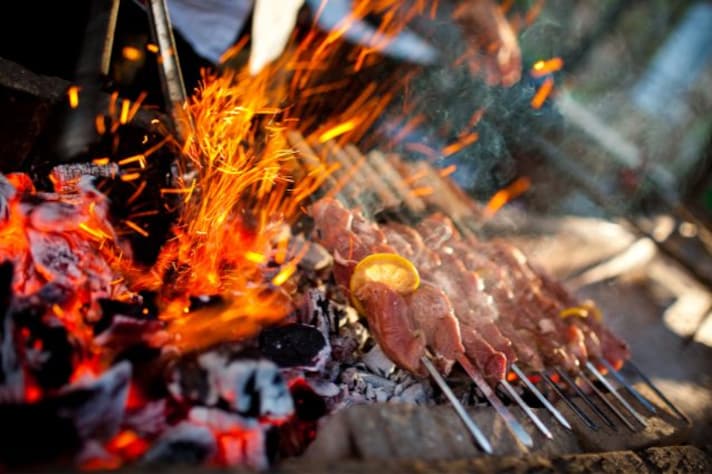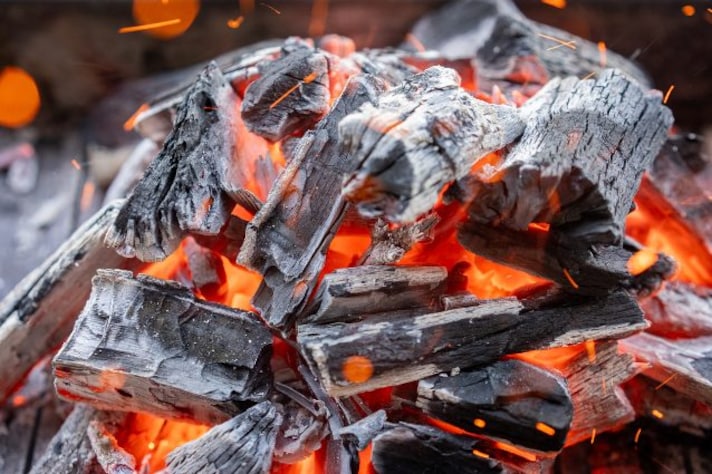
Ah, barbecuing—the closest thing Americans have to sacred summer ritual. I mean, come on, nothing screams “weekend” quite like the whiff of meat on a smoky grill and the hiss of fat hitting hot coals, right? But here’s the kicker: way too many self-proclaimed grill masters crank that flame up and just blast everything with direct heat. Sure, it’s fast. Sure, you get a killer sear. But, buddy, you’re basically turbo-charging your steak into leathery disappointment if you overdo it.
Direct Heat Vs. Indirect Heat
Let’s break this down a bit. You’ve got two main moves when it comes to grilling: direct heat and indirect heat. Direct heat is pretty simple—it’s what happens when you slap your food right over fire like some kind of caveman. Steaks, burgers, hot dogs? They love it. You get those sexy grill marks, the Maillard reaction does its magic, and everyone oohs and aahs. Except, go full blast the whole time, and you’re serving up shoe soles.
Now, indirect heat? That’s the barbecue version of low-and-slow. You park your food away from the flames, let it chill a bit, and cook evenly. It’s the go-to for stuff like ribs, roasts, or anything thick enough that you don’t wanna nuke the outside while the inside stays raw. Honestly, you gotta treat your meat with some respect—give it time to bask in the smoky sauna rather than getting carbonized in a flash.
Why Direct Heat Leads to Dry Meat (And Veggies Too)
Think about it: pile on too much direct heat, and all those pretty grill marks mean nothing if the inside’s drier than your Aunt Betty’s Thanksgiving turkey. That hot-hot-hot cooks the outside faster than a TikTok trend, sucking the life (and moisture) out of the inside. Tough, flavorless, sad. You really want grandma gumming her way through your “special” burgers? Doubt it.

And those veggies everyone avoids? Roasting them over direct flame is just begging for trouble. One second they look gorgeous, next second—blistered beyond repair but still crunchy in the middle. You ever bite into a pepper that’s burn-on-the-outside, raw-on-the-inside? It’s like expecting a chocolate chip cookie and getting a handful of flour. Bleh. Give ‘em some indirect love; let them actually roast and caramelize.
Charred, Burnt Food Tastes Awful
Oh, and before you post those #grillmaster shots on the ‘Gram—chill with the “burnt is flavor” myth. Bit of char is cool, burnt-to-a-crisp is not. Unless you’re into eating charcoal, maybe tone it down, yeah? All that blackened stuff just tastes like bitterness and regret. Plus, you’re basically nuking all those nice flavors you worked for.
And there’s the real danger zone: undercooked food. You see a gorgeous, toasty outside and assume your chicken is done. Nope. Cut it open and—yikes—it’s still clucking. Don’t be that guy. Nobody wants stomach issues as their party favor.
So, if you actually wanna win bragging rights this barbecue season, learn to zigzag between direct and indirect heat. Sear for style, slow-cook for substance. Trust me, your guests (and their digestive systems) will thank you.

How to Learn to Grill Like a Pro
Alright, listen up: grilling isn't just “turn it up and pray for the best.” People who think that? Yeah, that's how you end up with burgers that are charcoal on the outside and sashimi in the middle. Been there, not fun.
Here’s the real deal: you gotta know when to blast your food with firepower and when to dial it back. So check this—first, for stuff like steaks or burgers, slap ‘em right over the flames. You want that sizzle, you want that crust. No half-stepping. Two, maybe three minutes each side, boom.
But, here's the catch—if you just leave it there, you're basically celebrating burnt offerings. So, once you’ve got that juicy sear, slide your masterpiece to the cooler side. That’s indirect heat at work, baby. Let it chill (well, not actually chill, but you get it) and finish cooking without wrecking the outside.
And don’t forget the lid. Seriously, put the lid on. It turns your grill into like… an outdoor oven. Keeps the heat in, cooks your food all the way through—no sad, raw middle.
;Resize,width=767;)
